Essayer OR - Gratuit
What Zoya Sees
The Atlantic
|November 2024
Long a fearless critic of Israeli society, since October 7 Zoya Cherkassky-Nnadi has made wrenching portraits of her nation's sufferingand become a target of protest.

You can't walk far in Tel Aviv without encountering a raw expression of Israel's national trauma on October 7. The streets are lined with posters of hostages, and giant signs and graffiti demanding BRING THEM HOME. Making my way through Florentin, a former slum that has become an artists' neighborhood, to visit Zoya Cherkassky-Nnadi,one of the most popular painters in Israel, I passed a mural of a child being taken hostage. A Hamas terrorist in a green headband and balaclava points a rifle at the child, who has his hands in the air. The boy is recognizable as a version of the child in the famous photograph from the Warsaw Ghetto uprising in 1943. The artist first painted the mural in Milan, but images of October 7 are not always well received outside Israel.
In Milan, someone scrubbed the Jewish child out of the picture.
Zoya first name only, at least in the art world also made drawings about October 7 that met with an unexpectedly hostile response abroad. Until then, Zoya's international reputation had been ascending. She was seen as a sharp critic and satirist of Israeli society-Israel's Hogarth, as it were. Like him, she sketches people whom others overlook; like his, her portraits editorialize. Perhaps you assume that overlooked means "Palestinian."
Zoya has made paintings about the plight of Palestinians, but what really interests her are even less visible members of Israeli society, such as African immigrants, and the invisible and stigmatized, such as sex workers. Since her October 7 drawings were shown in New York, however, she has been accused of making propaganda for Israel. Similar charges have been leveled against other prominent Israeli artists since the start of the Gaza war, but the denunciation of Zoya was particularly public.
Zoya is an immigrant herself-born in Kyiv in 1976, when Ukraine was still part I of the Soviet Union-and she has spent her life in a kind of internal exile.
Cette histoire est tirée de l'édition November 2024 de The Atlantic.
Abonnez-vous à Magzter GOLD pour accéder à des milliers d'histoires premium sélectionnées et à plus de 9 000 magazines et journaux.
Déjà abonné ? Se connecter
PLUS D'HISTOIRES DE The Atlantic

The Atlantic
Fast Times and Mean Girls
What the great teen movies tell us about American adolescence
9 mins
July 2025
The Atlantic
The TALENTED MR.VANCE
J. D. Vance could have brought the country's conflicting strands together. Instead, he took a divisive path to the peak of power.
27 mins
July 2025
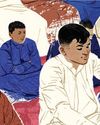
The Atlantic
THE WORLD’S HARDEST BLUFFING GAME
Why are some Iraqis so good at figuring out when a person is lying?
8 mins
July 2025
The Atlantic
WITNESS
Sin and redemption in America's death chambers
29 mins
July 2025
The Atlantic
The Clones Are Here
Faster horses, superior cattle, immortal pets the big business of animal cloning
22 mins
July 2025
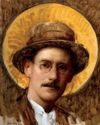
The Atlantic
The Canonization of James Joyce
Richard Ellmann's biography made the novelist a hero to generations of readers and scholars.
10 mins
July 2025
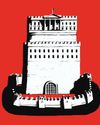
The Atlantic
FEUDALISM IS OUR FUTURE
We may already be entering anew dark age.
13 mins
July 2025
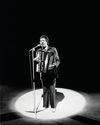
The Atlantic
When Mick Jagger Met the King of Zydeco
Clifton Chenier pioneered a new kind ofblues—and changed rock history, too.
9 mins
July 2025

The Atlantic
THE Tracy Anderson WAY
INSIDE THE EXCLUSIVE, OBSESSIVE, SURPRISINGLY LITIGIOUS WORLD OF LUXURY FITNESS
21 mins
July 2025
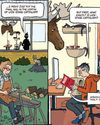
The Atlantic
The Secret to Happiness
Alison Bechdel has spent a lifetime worrying. In a new graphic novel, she finds something like solace.
9 mins
June 2025
